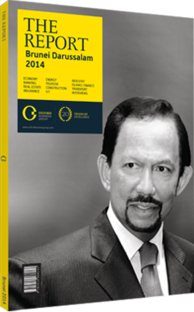Banks are increasing their lending to a number of sectors
The recent acceleration of bank lending to domestic businesses, albeit from a low base, shows the increasing seriousness of the government’s drive to speed growth outside of the dominant oil and gas sector. Driven by government-linked banks, the upturn has helped buoy domestic demand despite the decline in energy exports. The banks most responsible for driving the growth are Bank Islam Brunei Darussalam (BIBD), the largest Islamic bank and largest bank overall, and Baiduri Bank, the largest conventional bank. BIBD’s main shareholders are the Ministry of Finance and the royal family’s Sultan Haji Hassanal Bolkiah Foundation. Baiduri’s largest shareholders are Baiduri Holdings, a royal family firm, and the government-owned Royal Brunei Airlines and Royal Brunei Technical Services.
Big Lenders
BIBD and Baiduri Bank account for more than two-thirds of bank lending to domestic businesses and they accounted for more than 90% of the growth in lending to domestic businesses in 2012-13, according to their published financial statements and data from the Autoriti Monetari Brunei Darussalam (AMBD), the central bank. Although the accelerated lending has been accompanied by growing loan failures and write-offs, profitability has so far held up, and it is clear the government feels it can afford the risks. While total bank lending to domestic non-financial business increased by an annual average rate of 20% in 2012-13, or from BN$1.5bn ($1.2bn) at the end of 2011 to BN$2.2bn ($1.7bn) at the end of 2013, BIBD increased its lending to domestic non-financial business by an average rate of 26%, from BN$647m ($518m) at the end of 2011 to BN$1.03bn ($821m) at the end of 2013.
Baiduri increased its lending to domestic non-financial business, not including real estate and construction, by an average rate of 17% in 2012-13, or from BN$376m ($301m) at the end of 2011 to BN$511m ($409m) at the end of 2013. Baiduri’s statements do not separate lending to property and construction businesses from household property lending, but the figures on outstanding loans and their growth rates in this article are the net of provisioning and write-offs, so they understate the raw growth in lending.
Breakdowns of lending by sector, published by the two banks, show they have been increasing lending mainly to transportation and manufacturing companies. At the end of 2011 BIBD and Baiduri held BN$126m ($101m) of loans to manufacturing firms and BN$79m ($63m) of loans to transport firms. By the end of 2013, they held BN$299m ($239m) of loans to manufacturing firms and BN$286m ($229m) of loans to transport firms. BIBD and Baiduri, meanwhile, increased their combined market share of manufacturing lending from 35% at the end of 2011 to 69% at the end of 2013.
The two banks’ lending to general services firms – not including transport, telecoms, tourism or real estate – also increased relatively quickly, from BN$143m ($114m), or 67% of lending to the sector at the end of 2011, to BN$213m ($170m), at the end of 2013, or 75%.
New Directions
BIBD and Baiduri have been increasing their lending to retail and wholesale trade firms, where they have traditionally been weak due to a lack of close ties to ethnic Chinese families dominating domestic trade. The two banks boosted their combined lending to the wholesale and retail trade firms from BN$169m ($135m), or 45% of lending to the sector, at the end of 2011 to BN$217m ($174m), or 50% of lending to the sector, at the end of 2013.
The banking sector is anticipating a boom in lending to infrastructure and construction businesses as major bridge and other projects that were being tendered or planned in 2014 get under way. However in 2012-13 lending to infrastructure was fairly flat, with BIBD and Baiduri slightly increasing combined lending from BN$118m ($94m), or a 63% combined market share, in 2011 to BN$124m ($99m), or 67%, in 2013. BIBD’s real estate and construction lending grew from BN$123m ($98m) at the end of 2011 to BN$128m ($102m) in 2013. BIDB and Baiduri reduced their lending to the telecoms and tourism sectors while lending to agriculture, but those sectors are minor borrowers.
You have reached the limit of premium articles you can view for free.
Choose from the options below to purchase print or digital editions of our Reports. You can also purchase a website subscription giving you unlimited access to all of our Reports online for 12 months.
If you have already purchased this Report or have a website subscription, please login to continue.

